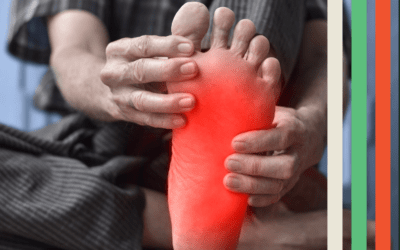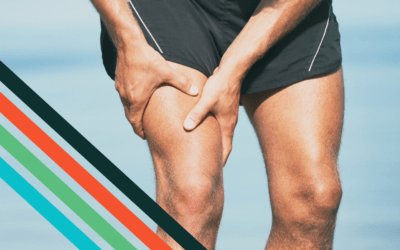Fueling for a Marathon: Our Expert Tips for Race Day
You trained hard for months. Now it’s time to show off that work. But there’s one last piece of the puzzle that could make — or break — your race day: fueling.
You nail your training runs, dial in your pacing, and get your shoes just right… only to fall apart at mile 18 because your energy tank hits empty.
Or worse yet — you over-carb-load with unknown foods and find yourself at kilometer 20 praying to the race gods for a porta potty to appear because you’re in serious danger and about to blow. (Unfortunately, I’m speaking from experience here.)
Let’s make sure that doesn’t happen, folks. Here’s how to fuel smart — before, during, and after your 26.2-mile journey.
Why Proper Marathon Fueling Matters
Every marathon runner fears hitting the wall. That crash usually happens when your glycogen stores — your body’s carb fuel tank — run dry. Imagine speeding down the highway, pedal to the metal, only to realize your tank’s on empty. No good.
Smart fueling helps:
- Maintain steady energy
- Delay fatigue
- Minimize porta potty emergencies
- Optimize endurance performance
- Impress your raving fans on Strava
Bottom line: Training gets you to the start line. Fueling gets you to the finish line.
What to Eat Before Your Marathon
A. Carb Load: 48 Hours Before
Shift your focus to high-carb, low-fiber, easy-to-digest foods:
- White rice
- Pasta
- White bread
- Peeled potatoes
- Fruit juice
- Sports drinks
- Bananas
You can sprinkle in fun foods like candy or pretzels — but if you’re not used to eating tons of sugar, be cautious. (Sour patch kids disaster, anyone?)
Aim for 7–12g of carbs per kg of bodyweight per day.
Example:
60kg runner (~132lbs) → 420–720g carbs/day.
Fast, simple carbs = faster glycogen storage. Fiber and fat = slower digestion. You want a quick pit stop, not a traffic jam.
B. Race Morning Nutrition
Race day breakfast is critical. Overnight, your body burns through liver glycogen — and you need to top it up.
When you eat carbs, they break down into glucose and fructose:
- Glucose refills muscle glycogen.
- Fructose refills liver glycogen.
That’s why eating foods that contain both glucose (white toast) and fructose (jam or a glass of OJ) can help top up both of these sources to maximize your performance at the race.
How Fructose and Glucose Help You Race Better
Picture this:
90 cars 🚗 all merging into one bridge = traffic jam. That’s what happens when you only eat glucose.
But fructose uses a different bridge.
Use both at once, and you open up two lanes — more carbs absorbed, faster, without the backup. That’s why race breakfasts aim for a 2:1 glucose-to-fructose ratio (like rice cakes + honey or bagels + juice).

(If this diagram looks like scientific jargon, don’t worry. It does to me too. Just remember: two separate lanes. More fuel, faster delivery.)
How Much to Eat Before the Race
✅ 2–4g of carbs per kg, 2–4 hours before your start time.
| Bodyweight (kg) | Bodyweight (lbs) | Low Rec (g carbs) | High Rec (g carbs) |
| 50 | 110 | 100 | 200 |
| 60 | 132 | 120 | 240 |
| 70 | 154 | 140 | 280 |
| 80 | 176 | 160 | 320 |
| 90 | 198 | 180 | 360 |


Stick to familiar, easy-to-digest carbs:
- Rice
- White bread
- Bagels
- Jam, honey
- Juice
- Drink mixes
Race day is not the time for bacon, broccoli, or “let’s just wing it.” Stick to what you know.
What to Eat During the Race
Fuel early and often — don’t wait until you’re running on fumes.
Target 30–90g carbs per hour, depending on size, pace, and gut training.
Fueling strategy tip:
Smaller, frequent sips and bites (e.g., 250ml fluid + 20g carbs every 20 minutes) beat chugging a giant carb bomb all at once. Practice this during long runs. Gut training matters as much as leg training.
Good options:
- Gels
- Chews
- Sports drinks
DIY carb mixes
Hydration and Electrolytes
Staying hydrated is important. Dehydration by just 2% of your body weight can cause a 5–10% drop in performance.
And here’s the kicker: Those fancy $300 carbon-plated shoes? They might give you a 3–4% boost. Neglecting hydration is like stepping over a $1 bill to pick up a Quarter. Doesn’t make sense.
Hydration tips:
- Aim for ~400–800ml (13–27 oz) of fluid per hour during the race, adjusting for heat and humidity.
- Include 300–600mg of sodium per hour as a starting point.
- Heavy sweaters (salt stains on clothes) may need up to 1000mg/hour.
- Use sports drinks, salt tabs, and salty gels to cover both fluid and electrolyte needs.
If you’re only drinking water without replacing electrolytes, you risk hyponatremia (low blood sodium) — especially in hot conditions.
Post-Marathon Recovery
You just ran a marathon. Your body is wrecked and needs nutrients fast.
In the first 30–60 minutes post-race, focus on:
- Carbs to refill glycogen
- Protein to repair muscles
- Fluids and electrolytes to rehydrate
Simple tip: You burn about 1 calorie per kg per km — for example, I’m 87kg and burn roughly 3600+ calories during a marathon. To replace those calories, I’d aim for 900–1200g of carbs spread across the day.
Dialing in your fueling strategy isn’t just for elite athletes. If you want to race stronger, feel better, and recover faster, Ludus Wellness can help you build a customized endurance fueling plan. Plus, Vital’s endurance coaching can help you pair the right training and nutrition together for maximum results.
Want to learn more? Click here to check out our Nutrition Coaching — or click “Book Now” to schedule your call with the Ludus team today.

More About The Author
Liam McVarnock, founder of Ludus Wellness: a Calgary-based coaching company that helps busy professionals lose weight, optimize their health, and perform at their best.
When he’s not helping clients transform, Liam is chasing extreme endurance goals himself – from sub-3 hour marathons to 547km Ultraman triathlons.



